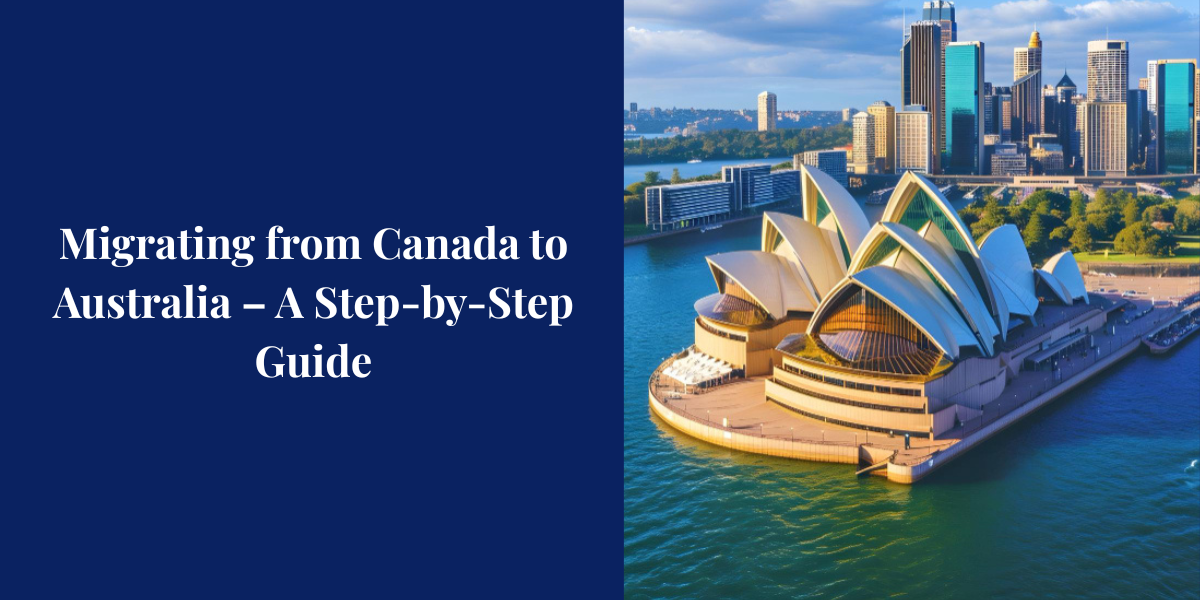
Australia continues to be one of the most attractive destinations for Canadian professionals, families, and students looking for a fresh start. With its high quality of life, strong economy, and relaxed lifestyle, it is no surprise that thousands of Canadians are making the move each year.
This blog walks you through everything you need to know about immigrating to Australia from Canada, including visa options, eligibility requirements, documentation, timelines, costs, and settlement steps.
Why Do Canadians Immigrate to Australia?
Canada and Australia share similar values, governance, and quality of life. However, Australia appeals to Canadians for several reasons:
- Warmer climate year-round
- More accessible job opportunities in sectors like healthcare, IT, trades, and education
- Globally recognized education system
- Public healthcare (Medicare) for permanent residents
- Pathways to citizenship
- Pro-English system
Step-by-Step Process to Immigrate to Australia from Canada
The steps to immigrate to Australia from Canada are as follows:
1. Identify the Right Visa Pathway
Australia offers multiple immigration pathways for Canadian citizens One of the most common routes is the Skilled Migration Program, ideal for working professionals with qualifications and experience in occupations listed on Australia’s Skilled Occupation List (SOL). The Subclass 189 – Skilled Independent Visa is perfect for highly skilled individuals who do not require any sponsorship. It is points-tested and allows you to live and work anywhere in Australia as a permanent resident.
The Subclass 190 – Skilled Nominated Visa requires nomination by an Australian state or territory. This visa is also points-based but offers additional points for the nomination and requires you to commit to living in the nominating state for a minimum of two years. The Subclass 491 – Skilled Work Regional (Provisional) Visa is another great option. This visa allows you to live and work in designated regional areas and can be a pathway to permanent residency after three years of continuous regional stay and income requirements.
For those pursuing higher education, the Student Visa (Subclass 500) allows you to study at an Australian university or college. Upon graduation, this can be a stepping stone to post-study work visas and eventually permanent residency. If you have close family members or a partner in Australia, you might be eligible for a Family or Partner Visa, which allows Canadian citizens to join their loved ones in Australia.
2. Check Your Eligibility
Before applying for any visa, it is important to check whether your occupation is in demand. Your job title must match those listed to be eligible for skilled migration. In addition to your occupation, you must meet several baseline criteria.
First, you should be under the age of 45 at the time of application (for skilled visas). Canadians are generally considered to have Competent English by default; however, higher test scores on IELTS or PTE (7.0 or 8.0 bands) can earn you more points. You must also have relevant work experience in your field, supported by documentation such as employment letters and payslips.
3. Get a Skills Assessment
A skills assessment is mandatory for skilled migration applicants. This ensures that your educational qualifications and work experience align with Australian standards. Various assessing authorities are designated for different occupations. For instance, IT professionals go through the Australian Computer Society (ACS), engineers through Engineers Australia, and so on.
4. Calculate Your Points
Australia uses a Points-Based System to evaluate visa applicants. To be eligible for most skilled visas, you must score at least 65 points, though competitive occupations may require 80-90 points or more for an invitation.
5. Submit an Expression of Interest (EOI)
After securing your skills assessment and English test results (if needed), the next step is to submit an Expression of Interest (EOI) via the SkillSelect portal on the Home Affairs website. This is not an actual visa application but a formal expression that you are interested in migrating. Ensure that your information is accurate and up to date. The government and state/territory agencies use EOIs to select candidates to invite for visa applications.
6. Wait for an Invitation to Apply (ITA)
After submitting your EOI, you must wait to receive an Invitation to Apply (ITA). The timeline for this depends on your points score, occupation demand, and state/territory nomination if applicable. Candidates with higher scores and in-demand occupations are more likely to be invited sooner.
7. Apply for Your Visa Online
Once invited, you can submit your full visa application through the ImmiAccount portal. The application must be complete and include all the important documents. All applicants must undergo a health examination conducted by a panel physician approved by the Australian government. This is to ensure you do not have any major health conditions that could burden Australia’s public healthcare system.
8. Visa Fees and Processing Times
As of 2025, the estimated visa fees for the Subclass 189 Skilled Independent Visa are around AUD 4,640, which is approximately CAD 4,200 for the main applicant. If you're applying with a partner or dependent children, additional charges will apply per applicant.
Processing times vary depending on the visa type and case complexity. Generally, the Subclass 189 and 190 visas take around 6 to 12 months, while Subclass 491 may take slightly longer due to regional requirements and checks.
Processing Time for Australian Visas
The processing time for Australian visas can vary based on the subclass, the accuracy of your application, and the volume of applications being handled at any given time. For the Skilled Independent Visa, applicants can typically expect a processing window of 6 to 9 months. The Subclass 190 and 491 visas, which involve state or regional nomination, generally take longer due to the additional steps required.
The average processing time ranges from 7 to 12 months. If you are applying under an employer-sponsored visa, such as the Subclass 482, the processing is usually quicker, taking approximately 3 to 6 months, provided all required documentation is in order and the sponsoring employer is already approved by the Australian government.
Conclusion
In this blog, Canadian citizens go through the complete process of immigrating to Australia. It covers selecting the right visa pathway such as skilled migration, employer-sponsored, student, or family visas. It also explains how to calculate your points score under Australia’s points-based system, submit an Expression of Interest, wait for an Invitation to Apply (ITA), and submit your visa application online. Additional steps include undergoing health and character checks, understanding visa fees, and tracking typical processing times for different visa types. With clear planning and accurate documentation, moving from Canada to Australia can be a smooth and successful journey.


